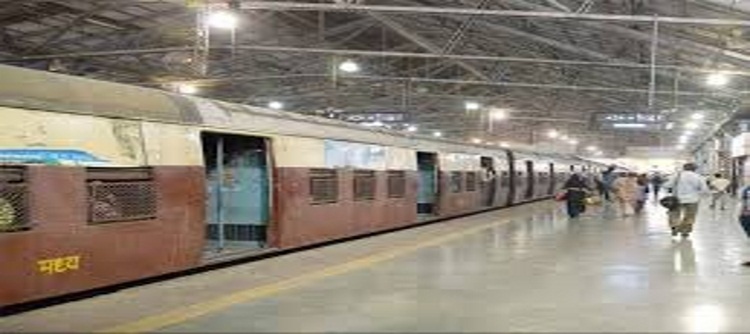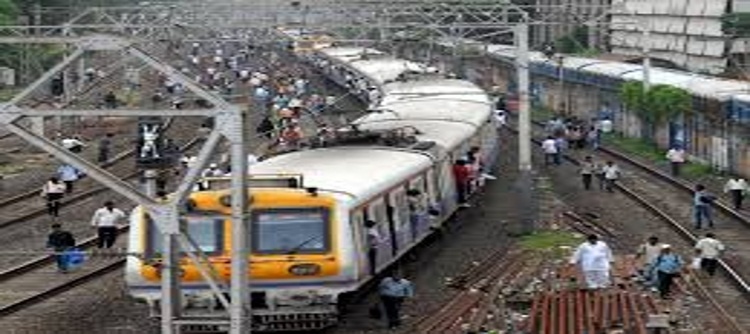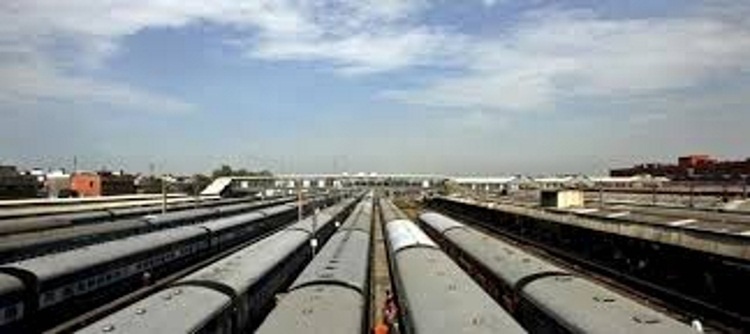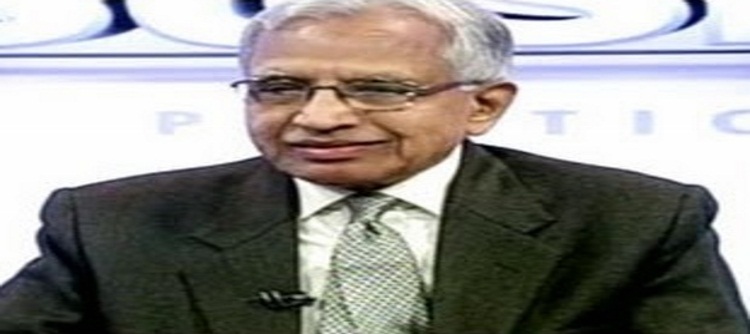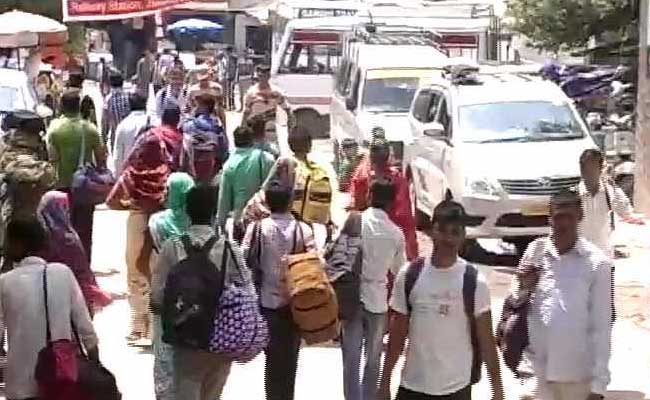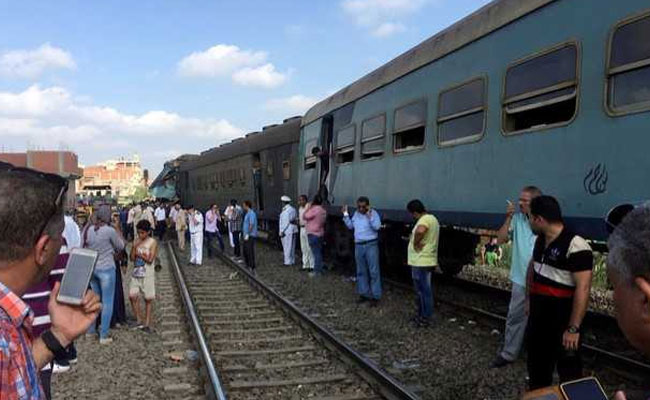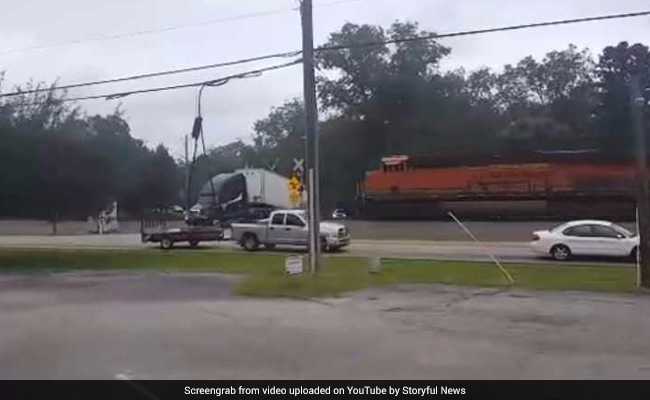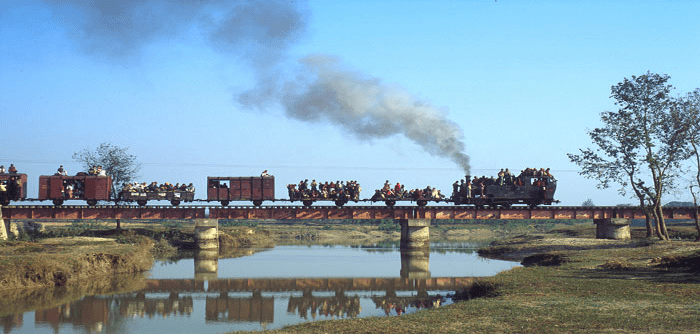
Three years after its last train hit the buffers, landlocked Nepal is building a new railway network to boost its ailing economy—helped by the rivalry between its powerful neighbours, China and India.
The railway line to India was a lifeline for the small southern frontier town of Janakpur, used to import everything from sweets to clothes and cosmetics and fuelling a vibrant border economy. The Janakpur Railway was a 762 mm gauge line which connects Jaynagar in India with the pilgrim centre in Janakpur. The big temple here is an interesting site and an important place of pilgrimage. As there is no parallel road the railway is still the only way to get there from Jaynagar. The line is flat and runs almost dead straight towards the north-west to Janakpur. As the lowlands to the foot of the Himalayan mountains see floods every monsoon season, there are many bridges along the line.
But it fell into disrepair after years of neglect and since 2014 the train has sat stationary, its rusting carcass now a playground for local children, while Janakpur’s markets are empty.
“When the train was running, we would have a lot of business. I was easily providing (for) my family,” said Shyam Sah, whose small family-run cosmetics shop has suffered an 80% drop in profits since the railway closed. Now it is being rebuilt with Indian backing, one of three new rail lines—one funded by China in the north and a third by Nepal itself— that the country hopes will help boost international trade.
Nepal remains largely isolated from the global economy, dependent on aid and remittances. Growth slowed dramatically after a 2015 earthquake but is expected to normalise at 5% from 2018—one of the slowest rates in South Asia—according to the World Bank.
In recent years it has courted its two large neighbours for investment in an attempt to plug itself into a rail network that links the far eastern reaches of Asia with Europe. But geography is not on its side. The Himalayas form a natural border between Nepal and China, leaving it largely dependent on India—with which it shares a 1,400 kilometre open border—for the majority of its imports and exports.
In recent years Kathmandu has tilted towards Beijing as part of a nationalist drive to decrease the country’s reliance on New Delhi. China has responded, ramping up its diplomatic ties with Nepal—mostly through large-scale infrastructure investments.
In 2017, Beijing pledged $8.3 billion to build roads and hydropower plants in Nepal, dwarfing India’s commitments of $317 million. Feasibility studies are also underway for a Beijing- backed railway connecting Kathmandu to Lhasa in Tibet, cutting straight through the Himalayas at an estimated cost of $8 billion.
Ankit Panda, senior editor at The Diplomat magazine, said that could be a game-changer for the small country. “The rail line with China holds potential depending on the demand side of the equation, on how China allows Nepal to leverage that link for commercial growth opportunities,” he said.
But it has strained relations between India and China, who are currently locked in a tense standoff on a remote Himalayan plateau in Bhutan sparked by a new road being built by China. “China knows that its chequebook diplomacy with the smaller Asian states is a sore point with India, which simply cannot afford to put up the kind of capital outlays that the Chinese promise,” said Panda.
The project is part of its “One Belt, One Road” initiative, a massive global infrastructure programme to connect Chinese companies to new markets around the world that critics see as a geopolitical powerplay. Regional rival India has snubbed the plan and skipped a summit in Beijing in May.
New Delhi is funding the reconstruction of the Janakpur line, rebuilding the tracks to carry broad-gauge trains that will allow it to connect to the rest of the subcontinent’s expansive rail network. Meanwhile Nepal is building a 945-kilometre line that will cut across the southern plains from east to west. Nearly a third of the track has been built, but construction has stalled for lack of funds and it is not clear when it work will be finished.
Some experts warn that Nepal has become a de-facto battleground in a geopolitical struggle for regional supremacy between India and China—a position that Kathmandu must navigate carefully. “None of them (smaller Asian nations) want to become a de facto satellite state,” said Michael Auslin, Asia expert and fellow with the Hoover Institution.
“But by having both India and China essentially compete over it, from one perspective it makes it a battleground, from another perspective it means that Nepal is playing the two off against each other,” he added.
Meanwhile, the people of Janakpur are eagerly awaiting the rail revival that will connect them to India once again. “When the train stopped, everything finished. Business has gone down for all of the city,” said bookshop owner Rajendra Kusuwah. “After the new rail comes, it will open doors for development.”
Work for Sitamarhi-Janakpur Railway line on high steam
The Indian government has started paperwork for laying down railway track between Sitamarhi district of Bihar and Janakpurdham of Nepal.
According to a news report published in Indian newspaper Bhaskar News, the 45-kilometer track is being laid down to strengthen bilateral relation between the two countries. The project has been included in budget of the India’s Ministry of Railways for 2016/17.
The track will be 60 meters wide, according to the news report.
It is believed that the railway line between Sitamarhi and Janakpurdham will enhance relation between the two countries.
Indian government has taken needful steps to do away with problems that might occur while implementing the project. The railway line is expected to boost trade and business in both the cities.
The number of Indian tourists coming to Janakpur has come down as the Bhittamod-Jaleshwar-Janakpur, the only road between Sitamarhi and Janakpur, is in a bad condition. Earlier, thousands of Indian tourists used to visit Janakpur during festivals like Ram Nawami and Bibaha Panchami, among others. Once the railway links the two cities, the number of tourists to Janakpur is expected to increase significantly, bringing more income opportunities for locals and businesses.
Nepal and India share friendly relation since ancient times. The marriage between Indian prince Rama and Nepali princess Sita has made Janakpur a special place for Indians. Easy mode of transport is expected to facilitate movement of visitors between the two cities.
Locals of Mahottari have welcomed the Indian government decision to build railway line between Sitamarhi and Janakpurdham. Bajrang Nepali, a local leader of Nepali Congress, expressed his happiness at the initiative taken by the Indian government. “Janakpur could be the capital of Province No. 2. So, massive investment in infrastructure sector is needed,” he added.
He also said that the government should now take up the issue with India. “Though Indian has begun paperwork for the railway line, no route has been finalized yet. The two governments should sit together and finalize the route,” Nepali added.

